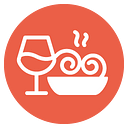






Salad for the czar's court
News and trivia about the origins of coleslaw, with a tasty innovative recipe

Where

Tradition or betrayal?
Who does not know Russian salad, prepared with a mixture of cooked, diced vegetables and topped with a mayonnaise sauce? It is a dish enjoyed by many, found in both traditional Italian and international cuisine. Pellegrino Artusi as early as 1881 spoke of it as a dish "now fashionable in lunches," pointing out how "having preserved its fundamental character, cooks concoct it at their pleasure": that is, many variations on the theme according to personal flair and, above all, according to the products available in the kitchen.
But is there an original recipe? When and where was it first prepared? Does it boast Russian origins? Or French? Or, instead, Italian? The debate is punctually rekindled especially during the year-end holidays, when Russian salad is most frequently offered on tables. Hypotheses about its creation are diverse, none is certain, but we are certainly faced with a clear example of how tradition can also mean a betrayal of the original canon. The word tradition, on the other hand, derives from the Latin noun traditio, which also means betrayal, and, according to the many accounts of its possible origins, in fact, we find that the current ingredients are certainly very different from those in some of the recipes listed as original.
Some claim that the first recipe originated in the mid-nineteenth century in a Moscow restaurant and involved the use of caviar, shrimp tails, lobster or even smoked duck, among others, depending on the season. The author of the first Russian salad would be named Lucien Olivier, which is why, in Russia, this dish is known as Olivier Salad. When the recipe began to spread to the rest of Europe, the ingredients were modified, that is, betrayal was carried out, replacing the most valuable elements with cheaper and commonly available ones.
 Among the main ingredients: potatoes
Among the main ingredients: potatoesIn the footsteps of a migrant dish
Cuisine is a migrant culture, and food has always accompanied man in his movements, as the dish in question also testifies, given that the relationships that were established between the different European courts, and the migrations of cooks in the retinue of different notables, compared experiences and products, blending them into results that were gradually enriched with new ingredients and ways of preparation.
Perhaps the first Russian salad in history was not properly Russian, nor was it even a salad. In Italy it is called Russian salad, but it changes its name when crossing national borders. In Germany and Denmark it is curiously known as Italian-style salad, in Lithuania they call it white salad. In Spain it has long been called imperial or Castilian salad, given the hostility of the Franco regime to references that might evoke flavors of a Bolshevik nature.
A curious hypothesis traces its origins as far back as the 16th century, when Bona Sforza, daughter of the Duke of Milan, became queen of Poland by marrying Sigismund I: the court cooks created a cold dish of mixed vegetables, using products of Italian origin along with what they found available at the Polish court. Thus it was that they mixed peas and carrots with potatoes and other vegetables, preparing a cold salad, which later inspired the creation of what is now the Russian salad. Some others locate its temporal origin in the eighteenth century, when it was called Genoese-style salad because it very often made a good impression at the banquets of the Ligurian aristocracy.
But not everyone is willing to believe these stories, and there are those who think that Russian salad is actually a creation that originated in Piedmont, at the court of the Savoy family: in this case, the name would be a tribute by the cook of the Savoy court to the visit of important Russian dignitaries in the late 1800s, with the cream covering and mixing all the ingredients, to remind them of snow, typical of the Russian climate. The guests would bring the recipe with them, and the dish would quickly become well known in Russia. Confirming this tale, in France, under the name "salade piémontaise" we find a variation of Russian salad.
In short, it is difficult to establish which is the truth, a bit like what happens with other dishes, zuppa inglese, for example, which has nothing English about it, since it is a very Italian dish, a spoon dessert that boasts several variations in the regions of central Italy.
 A basket of winter vegetables
A basket of winter vegetablesChef's recipe
I reasoned about these tales with chef Marco Roberto, of the Casa Pellico Restaurant in Saluzzo, an establishment located in the building where Silvio Pellico was born, in the charming historic center of the Cuneo town. Marco obviously leaned toward the Savoy origin of the recipe and suggested a winter version of the Piedmontese-style salad. In the preparation, only ingredients available fresh in the cold season, chosen from recovered varieties that give that extra touch of flavor, bound by a vegan mayonnaise, made without eggs, replaced by soy milk emulsified with sunflower oil.
And now I'll transcribe the recipe, betray it, just know that what really differentiates a good Russian salad from a "mess" are the vegetables, which must be fresh, and possibly steamed, as well as the mayonnaise prepared on the spot.
Enter the Map of Italy's Undiscovered Wonders and find treasures where you least expect it... Inspire, Recommend, Share...
Collections

